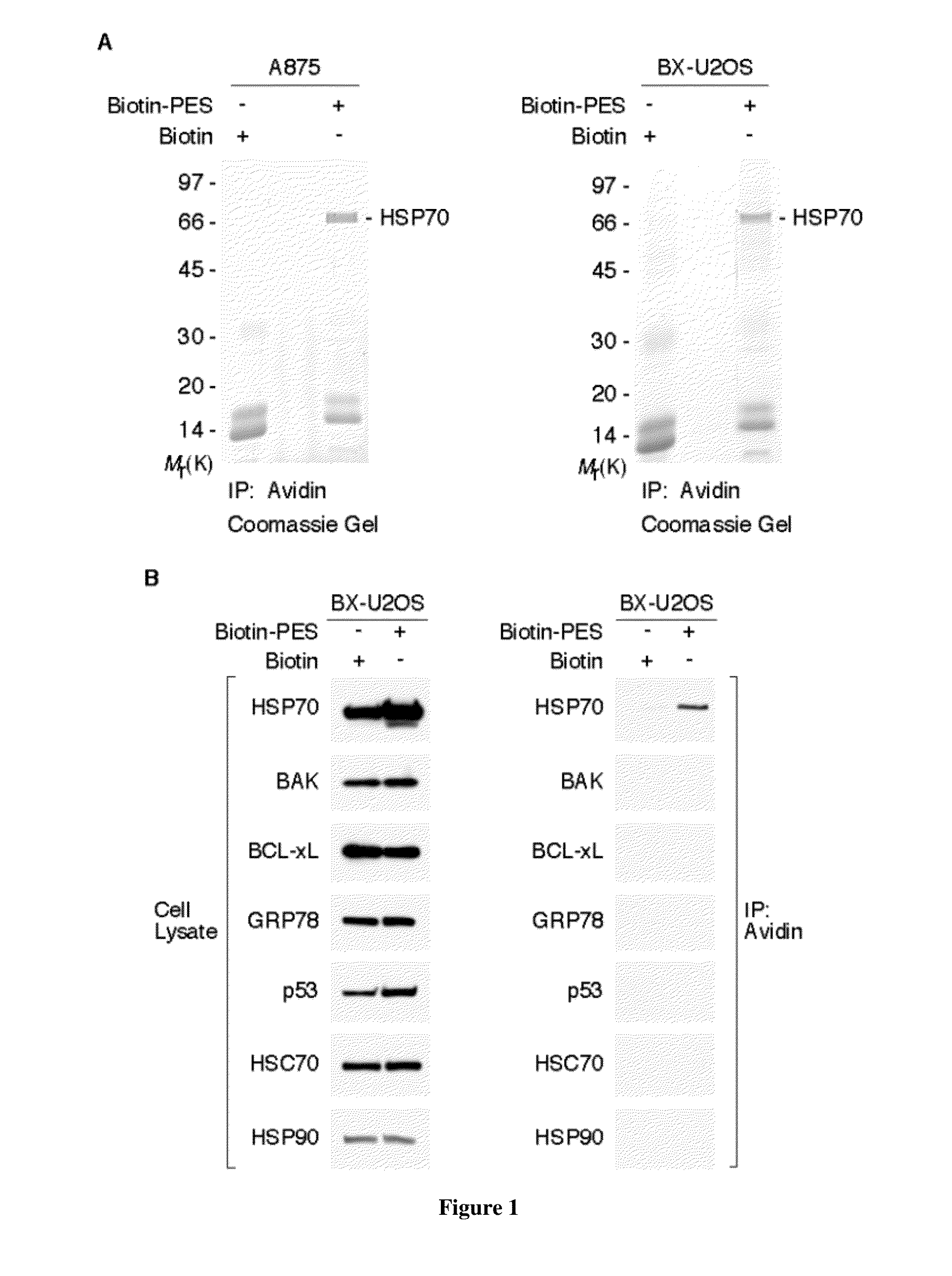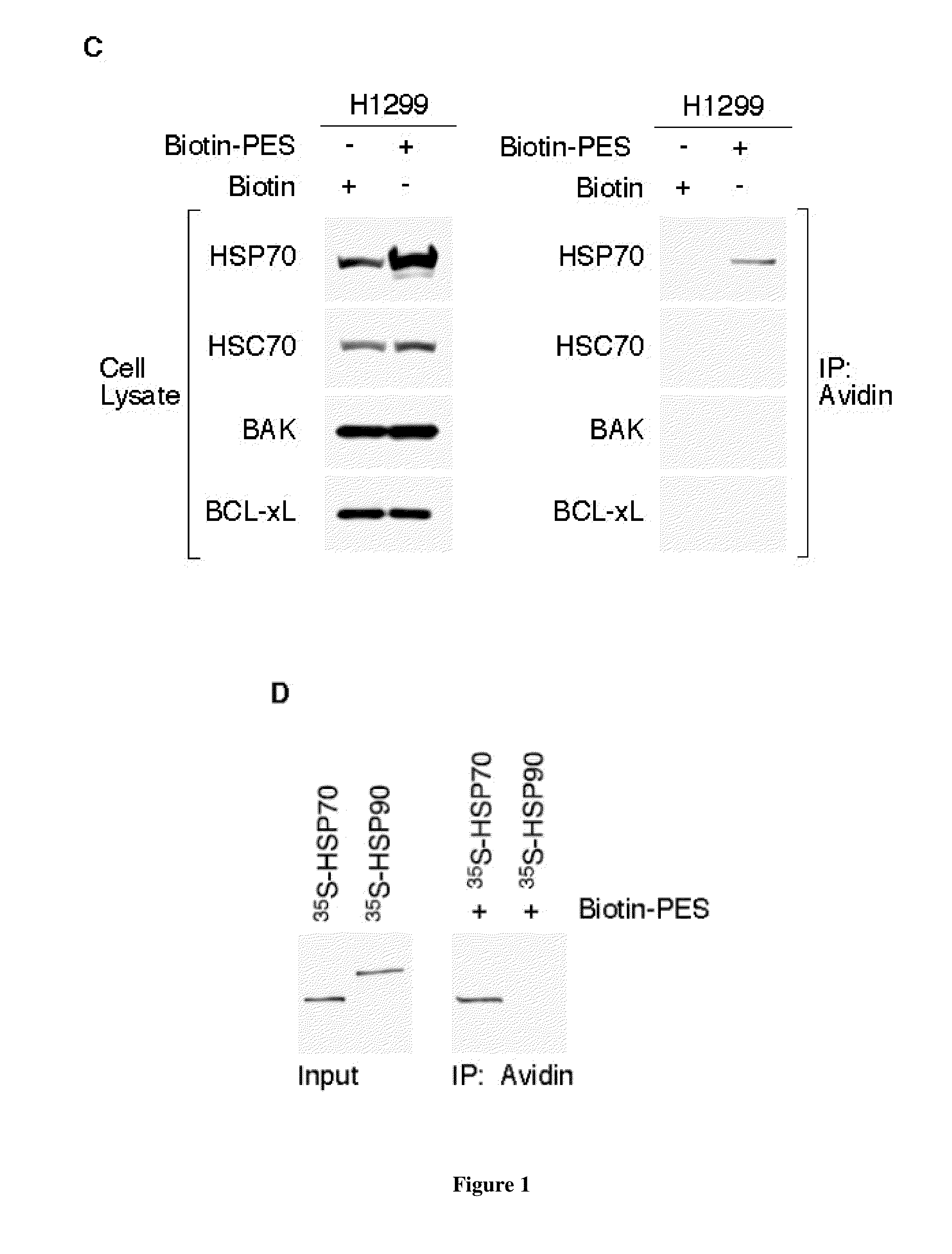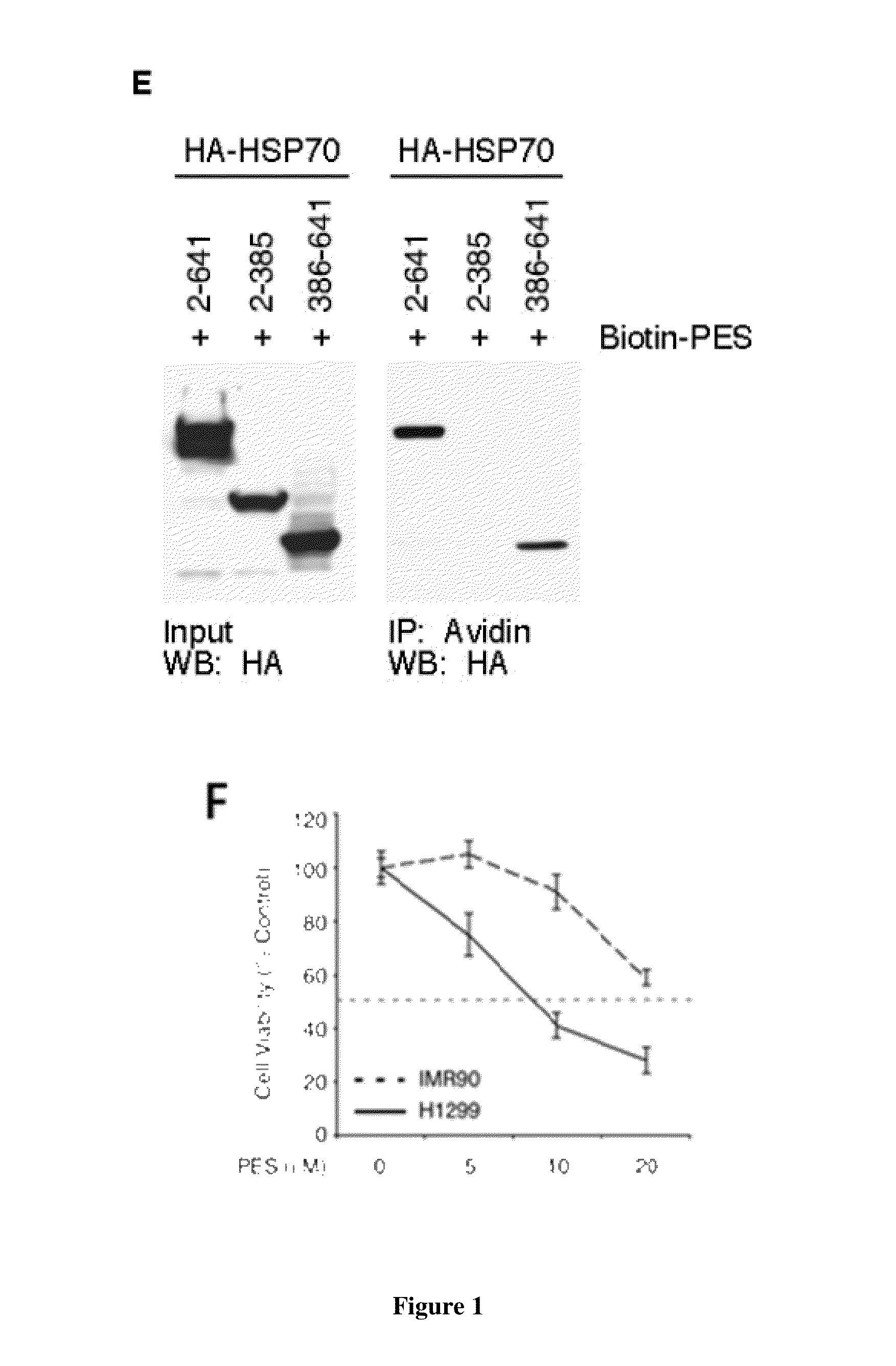Modulators of HSP70/DnaK function and methods of use thereof
a technology of hsp70 and dnak, applied in the field of modulating hsp70/hsc70/dnak function, can solve the problems of affecting the prognosis of patients,
- Summary
- Abstract
- Description
- Claims
- Application Information
AI Technical Summary
Benefits of technology
Problems solved by technology
Method used
Image
Examples
example i
PES Interacts with HSP70
[0127]PES was identified in a screen of the Chembridge DIVERSet library of drug-like small molecules for those exhibiting an ability to inhibit the direct mitochondrial pathway of p53-mediated apoptosis, and was referred to as PFTμ (Strom et al., 2006). Subsequently, we found that PES prevents the accumulation of p53 at mitochondria and inhibits caspase cleavage following cisplatin treatment of a human tumor cell line (Leu and George, 2007). In an attempt to better understand the molecular basis for these observations, we sought to identify intracellular targets of PES.
[0128]Based on the structure of PES (FIG. 2A), we used a thiol-cleavable amine-reactive reagent to synthesize a biotinylated form of the molecule (biotin-PES), as described (see Methods). Several mammalian cell lines were treated with biotin-PES, cell lysates were prepared, and biotin-PES complexes were captured using NeutrAvidin Resins. PES-interacting proteins were eluted using 100 mM DTT, wh...
example 2
Combined PES and Chemotherapy and / or Radiation Treatment Effectively Kills Cancer Cells
[0158]PES was originally identified as an inhibitor of mitochondrial p53. Hsp70s function to re-fold misfolded proteins, and to enable protein trafficking to mitochondria, and across membranes. Silencing HSP70 universally kills tumor cells, with little toxicity to normal cells. As discussed above in Example 1, PES inhibits autophagy which is known to protect cells from hypoxia mediated cell death. Hypoxia is well known to protect cancer cells from the impact of chemotherapeutic agents and radiation. Accordingly, we performed experiments to assess whether PES cooperated with either a chemotherapeutic agent or radiation to induce tumor cell death by inhibiting autophagy / survival. As shown in FIGS. 20A and 20B and described above, PES acts synergistically with cisplatin to kill FADU cells.
[0159]In further experiments we subjected FADU cells to a combination of PES (10 μM) and gamma irradiation (10 Gy...
example 3
PES-Cl Interacts with HSP70
[0169]PES-Cl was shown to interact with HSP70. The free amide group of PES-Cl was biotinylated and added to HA-tagged HSP70-transfected H1299 cells. The treatment of the cells occurred for 6 hours. The complexes were pulled down with NeutrAvidin beads, eluted with 100 mM DTT treatments, separated with SDS-PAGE and detected with anti-HA antibody (Millipore) by Western blot. Both PES and PES-Cl were determined to interact with HSP70 (FIG. 23).
PES-Cl Inhibits Autophagy in H1299 and FaDu Cells
[0170]The inhibition of autophagy by PES-Cl was observed in the H1299 and FaDu cell lines. The potential of PES-Cl induced apoptosis was also observed. Tumorogenic cells H1299 and FaDu cells were seeded in 10 cm plates and were treated with 10 μM PES or 10 μM PES-Cl. DMSO treated cells were used as a vehicle treated control. Twenty-four, 48 and 72 hours post-treatment the cells were scrapped and protein extracts were generated. Western blotting was performed as described ...
PUM
 Login to View More
Login to View More Abstract
Description
Claims
Application Information
 Login to View More
Login to View More - R&D
- Intellectual Property
- Life Sciences
- Materials
- Tech Scout
- Unparalleled Data Quality
- Higher Quality Content
- 60% Fewer Hallucinations
Browse by: Latest US Patents, China's latest patents, Technical Efficacy Thesaurus, Application Domain, Technology Topic, Popular Technical Reports.
© 2025 PatSnap. All rights reserved.Legal|Privacy policy|Modern Slavery Act Transparency Statement|Sitemap|About US| Contact US: help@patsnap.com



